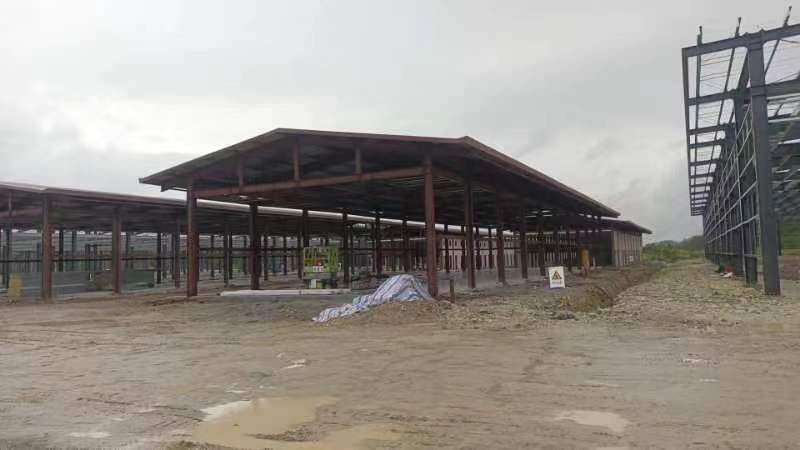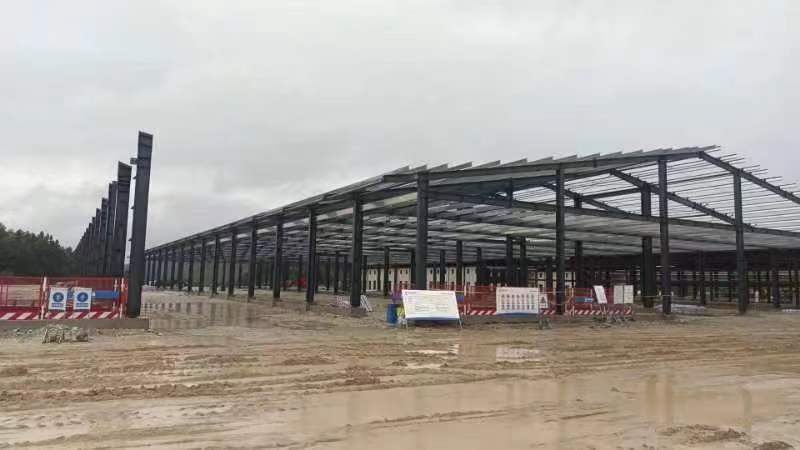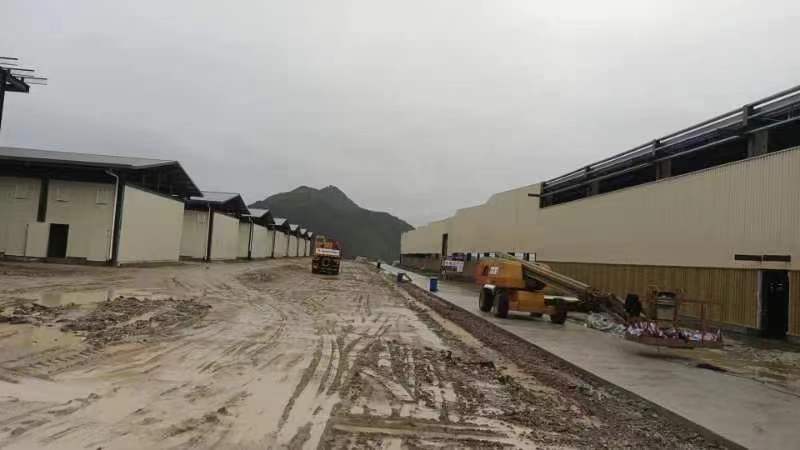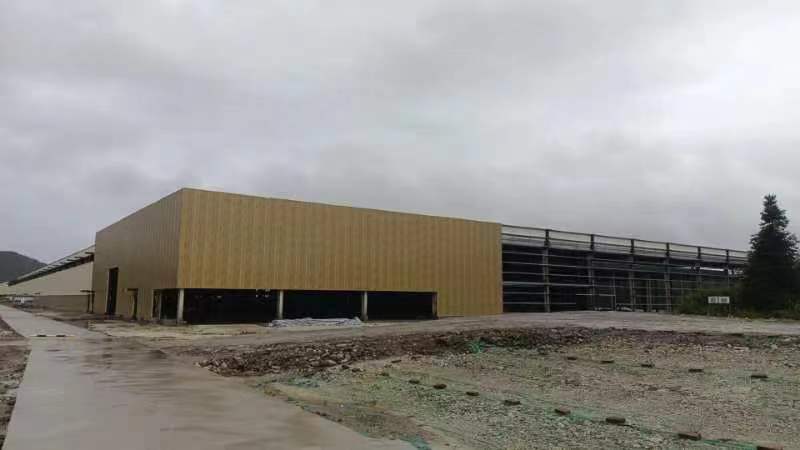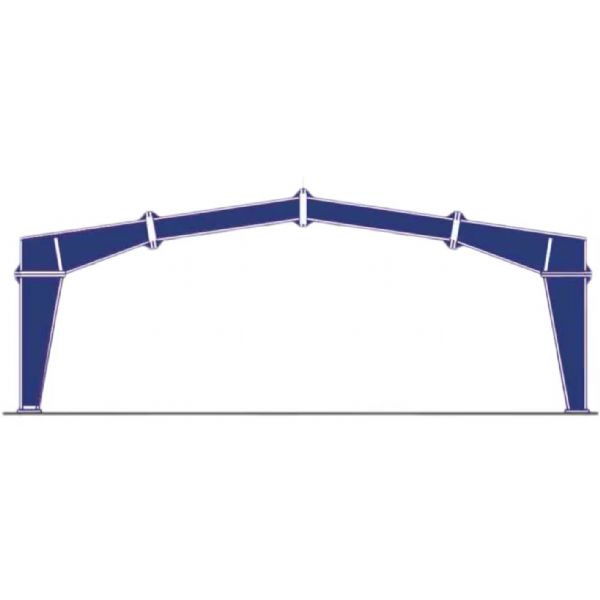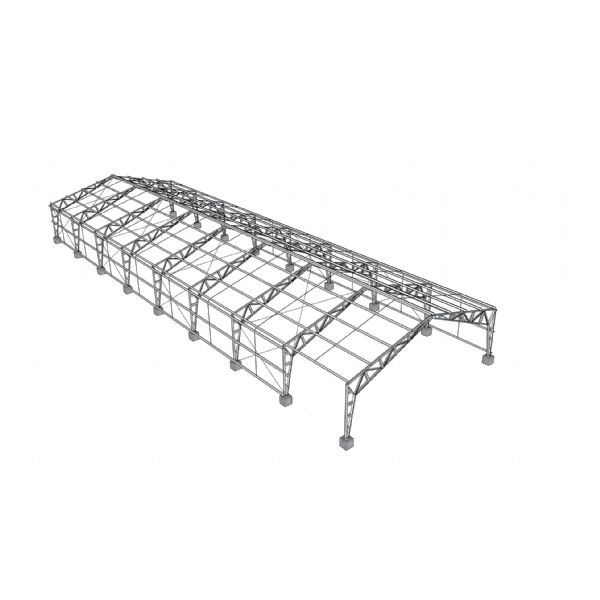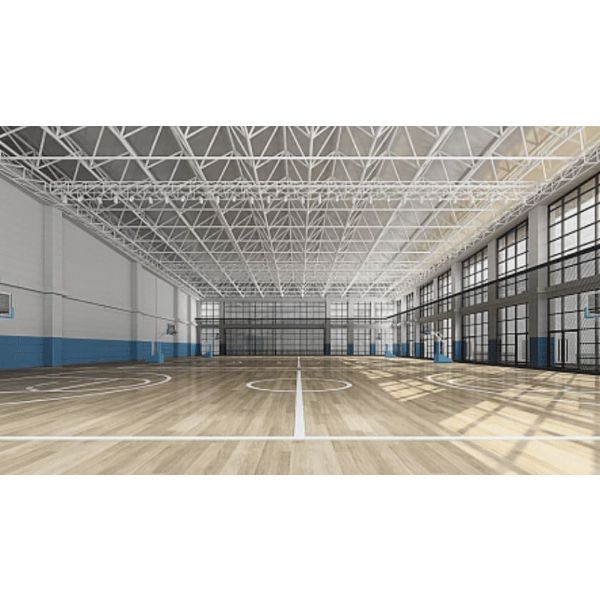Steel Structure Warehouse Building Details
The Shouning County Edible Fungi Whole Industry Chain Development Project (Phase I) stands as a milestone in modern agricultural infrastructure. Designed as a steel structure warehouse building, this project integrates durability, efficiency, and innovation to support large-scale edible fungi production and distribution.
Location and Scale
Project Location
Situated in Shouning County, this steel structure warehouse building is strategically located to maximize accessibility and supply chain efficiency within the growing edible fungi industry.
Building Area and Structure
The steel structure warehouse building spans an impressive 54,000 square meters, making it one of the most expansive facilities of its kind in the region. This vast footprint provides ample space for a wide range of industrial functions, from large-scale manufacturing and processing to warehousing, distribution, and equipment storage. The design reflects not only the immediate operational needs of the facility but also the foresight to accommodate future growth and technological upgrades.
Within this extensive area, the layout has been carefully planned to support efficient workflows. Wide spans and unobstructed floor areas allow for the seamless movement of materials, machinery, and personnel, minimizing bottlenecks and maximizing productivity. Dedicated zones for storage, processing, and administrative operations ensure that every aspect of industrial activity is integrated into a cohesive and functional environment.
The structural system, based on modern steel engineering principles, ensures both durability and adaptability. The building’s framework is capable of withstanding the rigors of continuous industrial use, including heavy loads, large machinery, and varying environmental conditions. At the same time, the flexibility of steel construction allows the facility to be reconfigured or expanded as production needs evolve, making it a truly future-ready investment.
For agricultural production in particular, the building’s scale and design are invaluable. The expansive interiors can house advanced processing equipment, large storage silos, and climate-controlled sections, all of which are essential for maintaining product quality and supporting high-volume output. This adaptability ensures that the facility remains relevant and efficient across decades of use, no matter how industry standards or production demands may change.
In essence, the 54,000 m² steel structure warehouse building is more than just a structure—it is a strategic asset, purpose-built to deliver operational excellence today while offering the resilience and flexibility to meet the challenges of tomorrow.
Structural Highlights
Steel Usage
The construction of the Zhejiang East Canal Museum Building required 2,819 tons of high-quality steel, underscoring the project’s scale and the vital role of steel in modern architecture. This substantial usage reflects not only the strength and stability demanded by the design but also the long-term reliability expected of a cultural landmark. By employing steel as the primary structural material, the project ensures that the museum is equipped to withstand environmental stresses, accommodate heavy visitor traffic, and adapt to future maintenance needs.
Beyond its structural integrity, steel also contributed to the cost-efficiency and sustainability of the project. Prefabricated steel components allowed for faster on-site assembly, minimizing labor costs and construction timelines. Additionally, steel’s recyclability supports environmentally responsible building practices, aligning the museum with contemporary goals of green construction and resource efficiency. Taken together, the use of 2,819 tons of steel not only guarantees durability but also positions the museum as a model of efficient and forward-looking construction methods.
Structure Type
The building’s design incorporates a standard portal frame system, one of the most widely used structural solutions in modern industrial and cultural architecture. This system is renowned for its simplicity, durability, and adaptability, making it particularly well-suited for large-scale facilities that require vast, uninterrupted interior spaces.
The portal frame’s ability to span wide areas without the need for intrusive internal supports allows the museum to achieve a flexible open-plan layout. This provides the freedom to accommodate a variety of exhibitions, installations, and cultural events without structural limitations. At the same time, the system’s inherent efficiency reduces construction costs and ensures long-term stability.
By choosing this proven structural system, the project’s designers combined practical engineering with architectural ambition. The result is a facility that balances technical performance with cultural significance—robust enough to endure the demands of daily use while elegant in its ability to host diverse exhibitions and public gatherings.
Completion Timeline
The main structural frame of the Zhejiang East Canal Museum Building was finalized in 2024, representing a significant milestone in the project’s carefully phased development plan. This achievement not only demonstrated the technical expertise of the construction team but also highlighted the precision and reliability of modern steel-based construction methods.
The timely completion of the structural frame was the result of meticulous scheduling, resource coordination, and on-site management, ensuring that each stage of the project advanced seamlessly. By integrating prefabricated steel components and adopting advanced assembly techniques, the construction process was both accelerated and streamlined, reducing potential delays while maintaining high standards of safety and quality.
Reaching this critical stage also symbolized the transition from foundational work to architectural detailing and interior development. With the frame in place, attention could shift toward installing the museum’s innovative façade systems, interior layouts, and exhibition spaces—elements that would ultimately define its cultural and aesthetic identity.
Overall, the 2024 completion of the main frame stands as a testament to the efficiency, resilience, and adaptability of steel construction, while also reflecting the project’s broader vision: to deliver a world-class cultural landmark on schedule and in alignment with Shaoxing’s urban development goals.
Role in Agricultural Development
Supporting Local Industry
This new facility is more than an industrial site—it plays a central role in advancing Shouning County’s agricultural economy. By providing modern infrastructure, it helps boost production capacity and enhances competitiveness in the edible fungi market.
Innovation and Sustainability
Steel construction brings long-term advantages such as reduced maintenance, structural resilience, and adaptability to future technological upgrades. These qualities align with sustainable development goals, ensuring that the project remains valuable for decades.
The edible fungi industry in Shouning County gains a significant boost from this newly completed facility. With its large scale, efficient structural system, and modern design, the project illustrates how well-planned industrial buildings can strengthen regional agriculture while meeting future demands.

